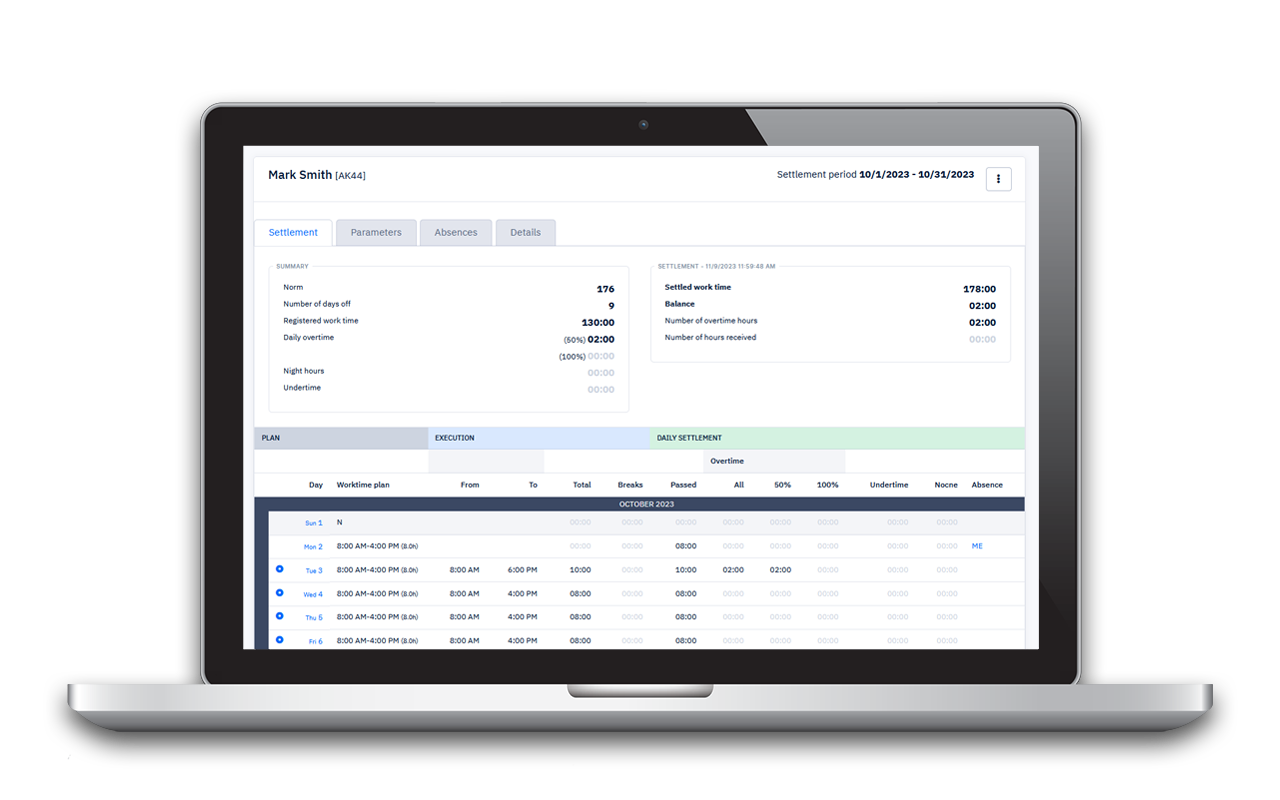Setting work schedules is often not an easy task, as there are quite a few factors to consider. Electronic systems for creating a work time schedule come to the rescue, thanks to which you can quickly and efficiently plan the work of your team without wasting valuable time on this activity.
In the following article you will read:
1. What elements must be included in the working time schedule
When setting work schedules, we must take into account the following elements:
• working hours
• information about working days
• start and end working time
• working day
• days off for the 5-day work week
• public holidays
• providing a free Sunday at least once every 4 weeks
• employee holidays
Therefore, when starting to create a schedule, there are quite a few elements to take into account. However, the basic thing is to calculate how many hours a given employee has to work in a given pay period.
To do this, you need to follow 3 steps:
Step 2: to the result from the previous step, add the product of 8 hours and the remaining working days falling in a given settlement period
Step 3: subtract 8 hours for each holiday or other public holiday that falls on a day other than Sunday.
Assuming that our company has a monthly settlement period, then, for example, in May 2024, the employee's working time will be as follows:
40x4 + 3x8 – 3x8= 160 hours of operation
If your company uses a three-month billing period, this calculation should be done for three consecutive months and then the number of hours from each month should be added up.
Then, all the above-mentioned factors should be taken into account in the schedule, i.e. holiday plans, daily rest, free Sunday once every 4 weeks, pick-ups for work on Sundays or holidays.
Quite a lot, right?
Time Harmony comes to the rescue. In our system for recording, planning and settling working time, scheduling work time is one of the functionalities that allows you to automate the process of creating schedules.
2. Setting work schedules – what does the Labour Law say?
Article 129 §3 of the Labour Code is devoted to the working time schedule, which specifies the form in which the working time schedule should be drawn up and the date by which it should be communicated to the employee. Namely, it reads that:
Setting work schedules is mandatory for shift work, equivalent work and in companies working on Sundays and holidays.
And which companies are exempt from the obligation to create and communicate working time schedules to employees?
3. Is working time scheduling mandatory in every company?
Other circumstances exempting from the obligation to create a working time schedule are situations when: the employee works in a task-based system or at the employee's request works in a flexible or individual working time system.
4. Is it possible to change the working time schedule?
In accordance with the provisions of the Labour Code, the employer may make changes to the schedule in order to designate a day off for work on Sundays, holidays or other days off resulting from the working time, as well as if they grant time off for overtime. Changes in the schedule occurring due to other circumstances should be justified and resulting from objective reasons, and the possibility of introducing them should be described in the company's internal regulations.
5. How to quickly create a schedule in Time Harmony
Are you thinking about streamlining and automating the process of planning work and setting work schedules in your company? Check out Time Harmony!
With the help of our system, creating a schedule will take just a moment. The system will calculate the number of working hours in a given settlement period, take into account planned holidays and holidays.
Creating a work schedule in Time Harmony is just a few clicks away.
Select a non-working day and a day off for a 5-day work week according to your company's policies. Overwrite the schedule for all team members with a single click. And that's it. The system will catch any inconsistencies in the planned work plan.
See for yourself how easy it is:
6. What other functionalities does Time Harmony have to help you plan and settle your working time?
Time Harmony is a full-scale system for recording, scheduling and full settlement of working time.
Creating work time schedules and much, much more!
See the benefits of using our system in processes related to recording working time.
Compliance with employment laws. The tool, developed in cooperation with labour law experts and updated on an ongoing basis to comply with the applicable regulations, ensures compliance with the Labour Code and the correctness of planning and settlement of working time.
Planning of billing periods. Adjusting the settlement period to the company's internal regulations. The ability to smooth out the working time, define the statutory length of breaks, the range of night hours or days off.
On-line attendance list. Quick information on the number of employees present, absent and on break. Functionality combined with alerting about delays.
Settlement of working time. Individual settlement of each employee divided into standard hours, daily overtime 50% and 100%, average weekly 100%, night hours and absences.
Accounting for overtime. Automatic settlement of overtime, work on non-working days and holidays. Complete accounting of the working time worked.
Remote work registration. Our mobile time and attendance system is the perfect solution in the era of remote work. Employees can record their working time from anywhere.
Handling requests. Issuing requests for leave, childcare and other limited absences. Full control over employee absences.
Integrations. The universal interface allows for quick integration with your HR and payroll system in order to transfer the data needed for the financial settlement of the working time.

Easily manage your company's working time

